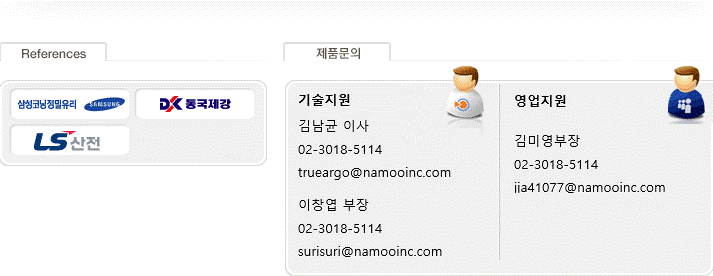CoreCode Concept
CoreCode "Manufacturing Message Bus Framework"
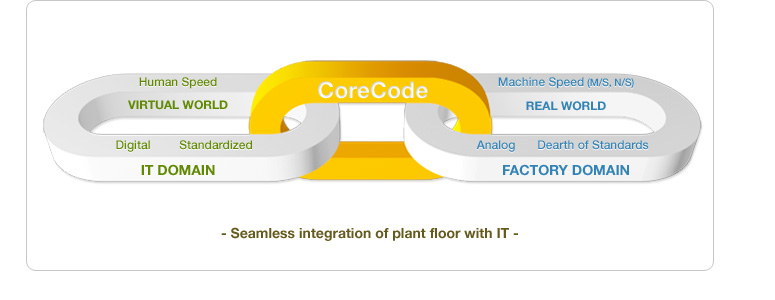
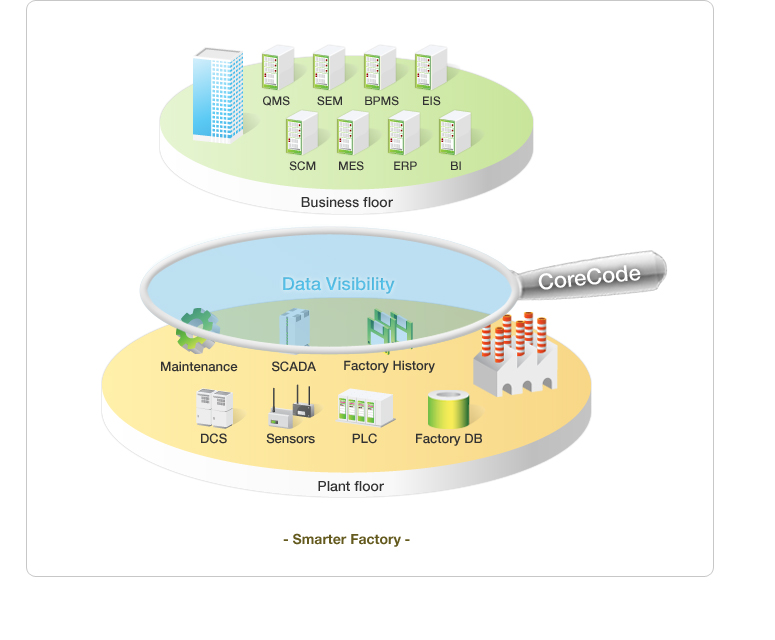
CoreCode Overview

CoreCode, a standard-compliant message bus framework with optional support of Real-Time processing, helps system architects build in flexibility and scalability to accommodate ever-present changes both in plant floors and business floors. Moreover, the framework provides a number of market-tested components (adapter) as well as APIs to customize the framework and build custom components.
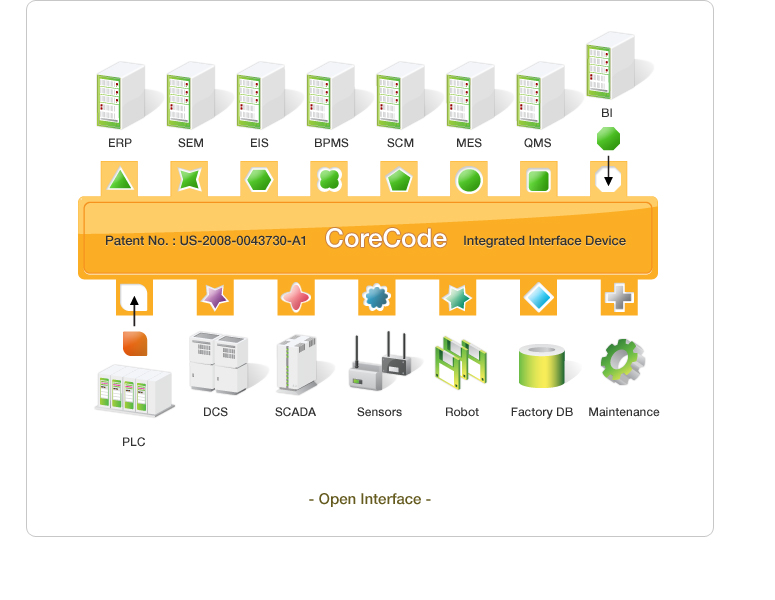
CoreCode Application Stack
The CoreCode is a suite of run-time engine and development tools; written in Java, it is component-based and highly reusable. Business logic is encapsulated in an independent external module called “Adaptor”, which gets loaded and executed dynamically by the run-time engine. With the real-time JVM, the CoreCode could deliver deterministic response.
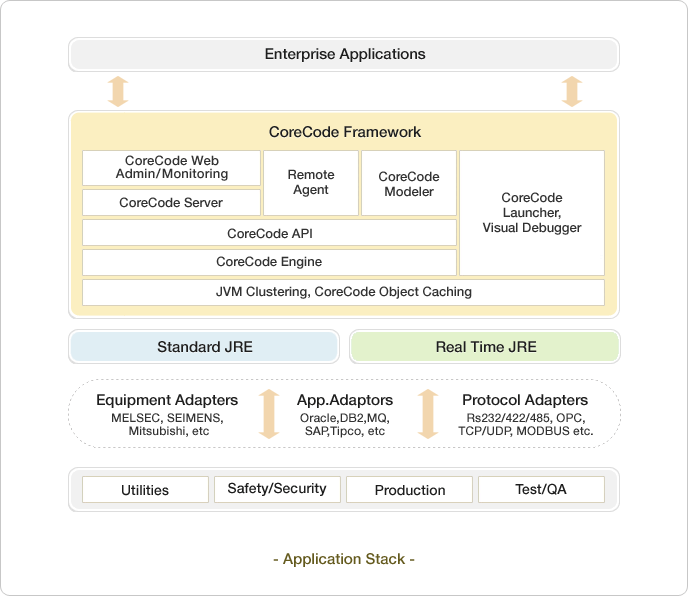
CoreCode Product Composition
ㆍ A set of tools covering the lifecycle of the software development processes is included; CoreCode Modeler, Visual Debugger, Web-based Management Server, Remote Agent.
ㆍ Along with the adapter templates, a number of market-proven adaptor modules are also included to help shorten the time to develop and deploy.
ㆍ CoreCode Modeler provides an integrated development environment to identify components, model, test and deploy the Adaptors.
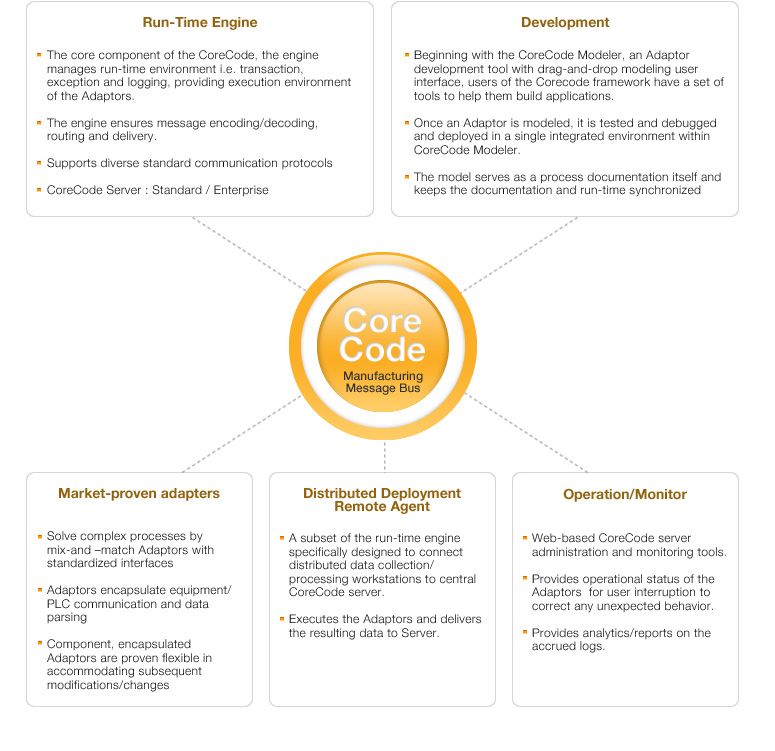
Features of CoreCode
Real-Time Java Support
Deterministic processing based on Real Time Java (IBM, SUN RTS authentication)
Ensuring both timely and high throughput processing
Open APIs
Open APIs lowers the learning curve for developers.
Open APIs help developers to acquire data from various devices/equipment in a consistent manner producing highly dependable and maintain-able codes.
Drag & Drop Development
Component-based Drag & Drop adaptor development using CoreCode Modeler and Visual Debugger.
Built-in Adaptor components supporting a host of industry- and open standards.
A suite of tools that covers the whole life cycle of the software development ? Remote Agent, CoreCode Server, Web Admin, Code Templates, Code Tutorials.
Flexibility and expansibility
Abstract, independent set of consistent APIs.
Component-based architecture designed to be flexible and expandable.
Reusable components that supports “Plug & Play” mode of application development.
Built-in components that support for diverse communication protocols such as OPC, SOAP, TCP/IP, XML, HTTP, RMI, MODBUS, RS232/422/485, etc.
Built-in components that support various interfaces for PLCs and DCSs using communication protocol components such as Mitsubishi Melsec, Siemens s7, LS Industry, Glofa, etc.
Fault-Tolerant and Load balancing
Supports Active-Active and Active-Standby highly available configurations for non-stop service.
The Remote Agent component and dynamic routing feature in the Corecode helps mitigate the peak demands by distributing processing.
Optimal convergence of shop floor and business floor
Data acquisition (in real time) from diverse automation devices and equipment on the shop floor in a standardized manner.
Normalization of the data from the shop floor so that other applications could process them in a standardized manner.
A suite of tools to help developers to produce such adaptors with drag and drop modeling approach.
